Environmental Apparitions
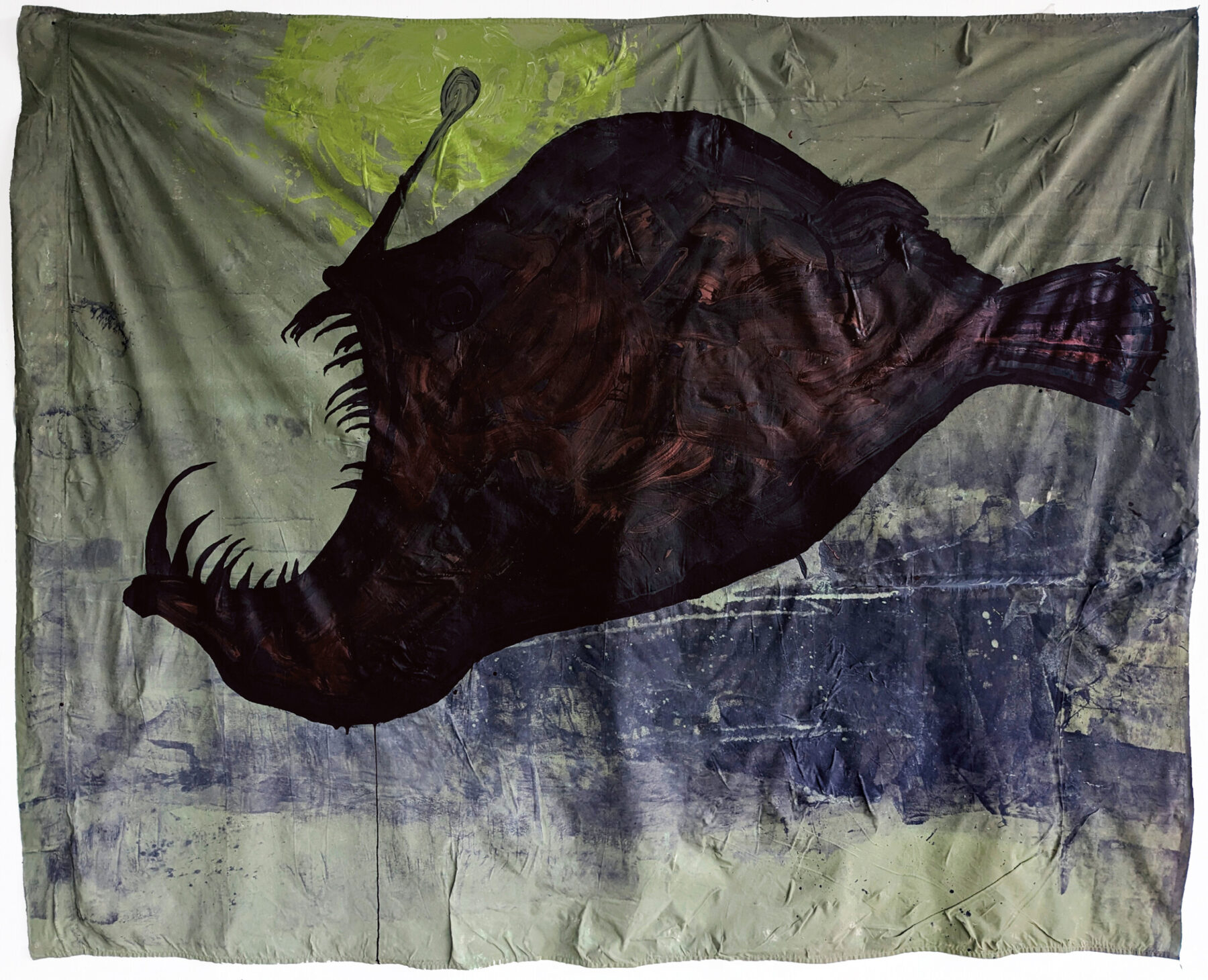
Brandon Ballengée, SOS Humpback Black Seadevil Anglerfish, 2023, salvaged latex house paint on thrifted cotton bed sheets, 77 x 96 inches. Courtesy of the artist and Various Small Fires, Los Angeles, CA.
Since the 2010 Deepwater Horizon oil spill, much of my art and research as a biologist has focused on the Gulf of Mexico. The spill’s long-term impact on fishes, along with other biota and Gulf ecosystems, is still not well understood. Additionally, there have been thousands of smaller spills, including the Taylor Energy oil spill—the longest running in US history—which began in 2004 and continues to leak today. Through my art, I want to give visual form to these environmental insults and inspire individual actions toward positive socioecological change.
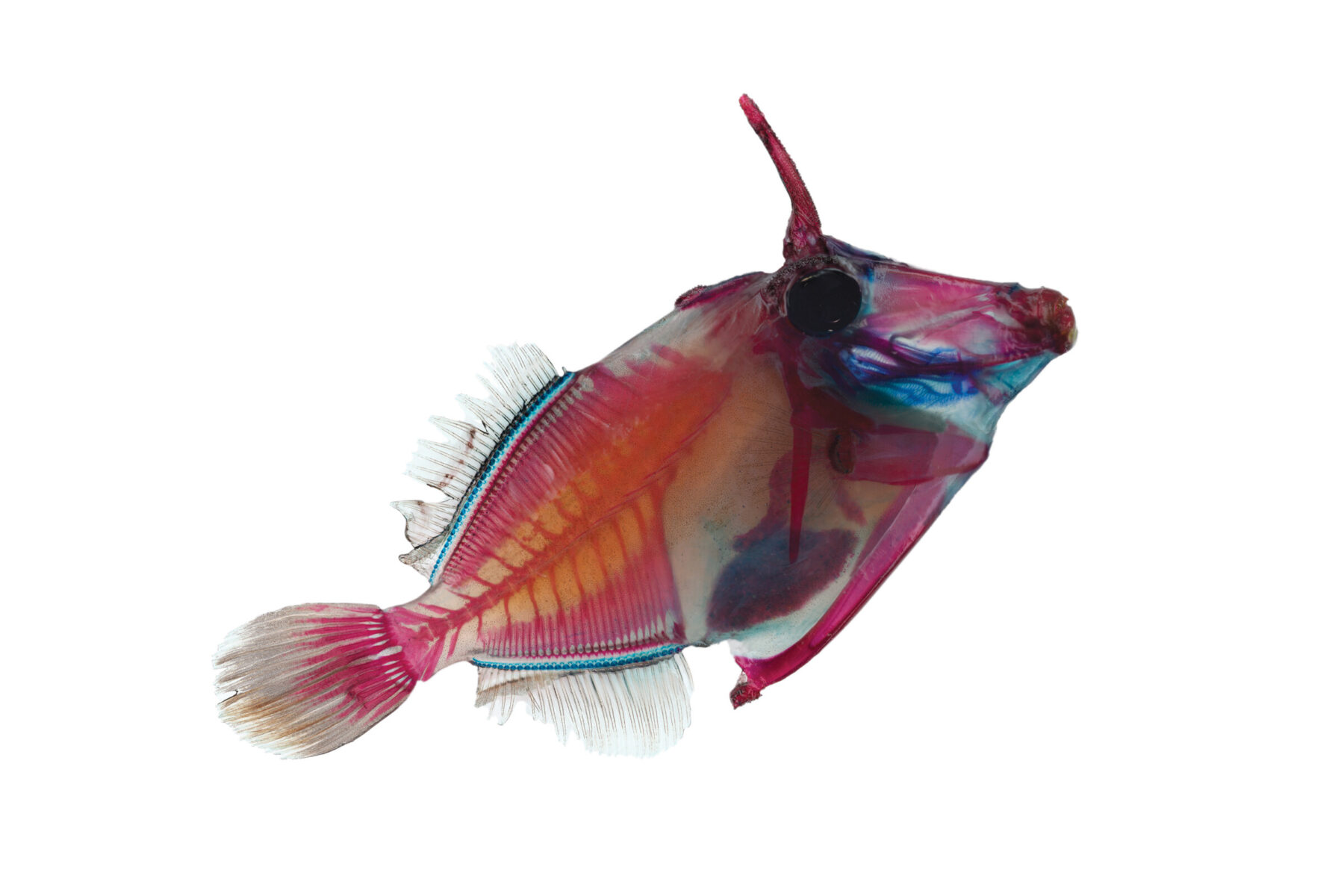
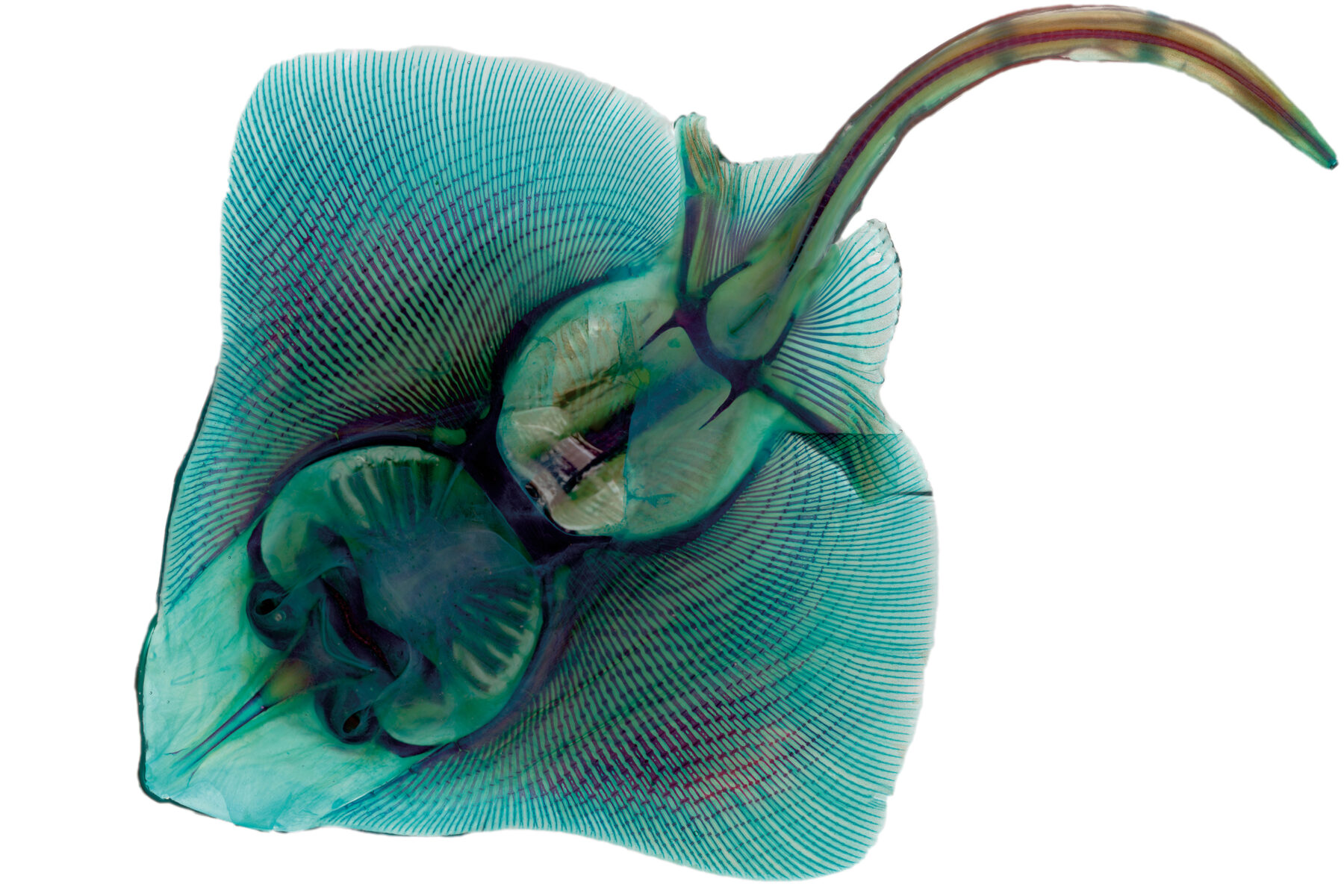
Brandon Ballengée, RIP Triggerfish, 2014 (left), and Texan Clearnose Skate, 2014 (right), giclée prints on handmade Japanese rice paper, 18 x 24 inches. Courtesy of the artist and Jennifer Baahng Gallery, New York, NY.
In Ghosts of the Gulf, I depict fish species collected in the Gulf after the 2010 oil spill. Many marine species that were once common have declined in recent decades and these ghosts express that loss. The process of preparing the fish for exhibit involves preserving specimens by placing them in an acid bath with a blue stain that adheres to cartilage. They are then masticated in a digestive enzyme called trypsin, which clears away other tissues. Following this, specimens are placed in an alkaline solution bath with red dye that bonds with bone, and then into a series of washes ranging from potassium hydroxide to glycerin, in which the fish tissues become transparent. As a result, photographic images show bones and cartilage vividly revealed in red and blue. I think of these works as a kind of environmental apparition.
In 2016, I was part of an interdisciplinary research team at Louisiana State University that published research showing that 14 fish species that were endemic to the Gulf of Mexico had not been reported following the Deepwater Horizon spill. But even before the spill, several Gulf fish species remained elusive and had not been found between 1950 and 2005. Little is known about these species; the only records we have of their existence are a handful of preserved specimens scattered among natural history collections.
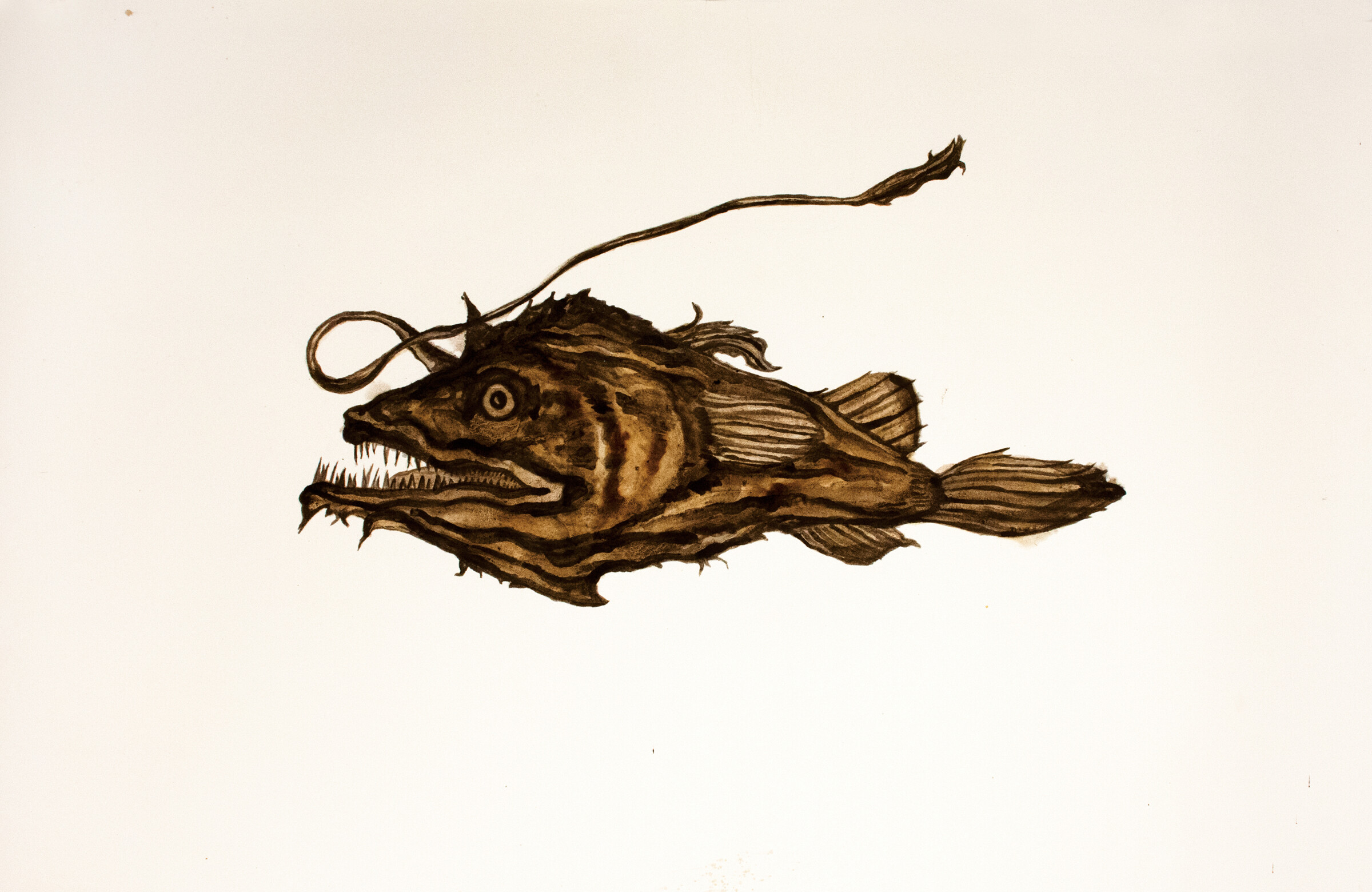
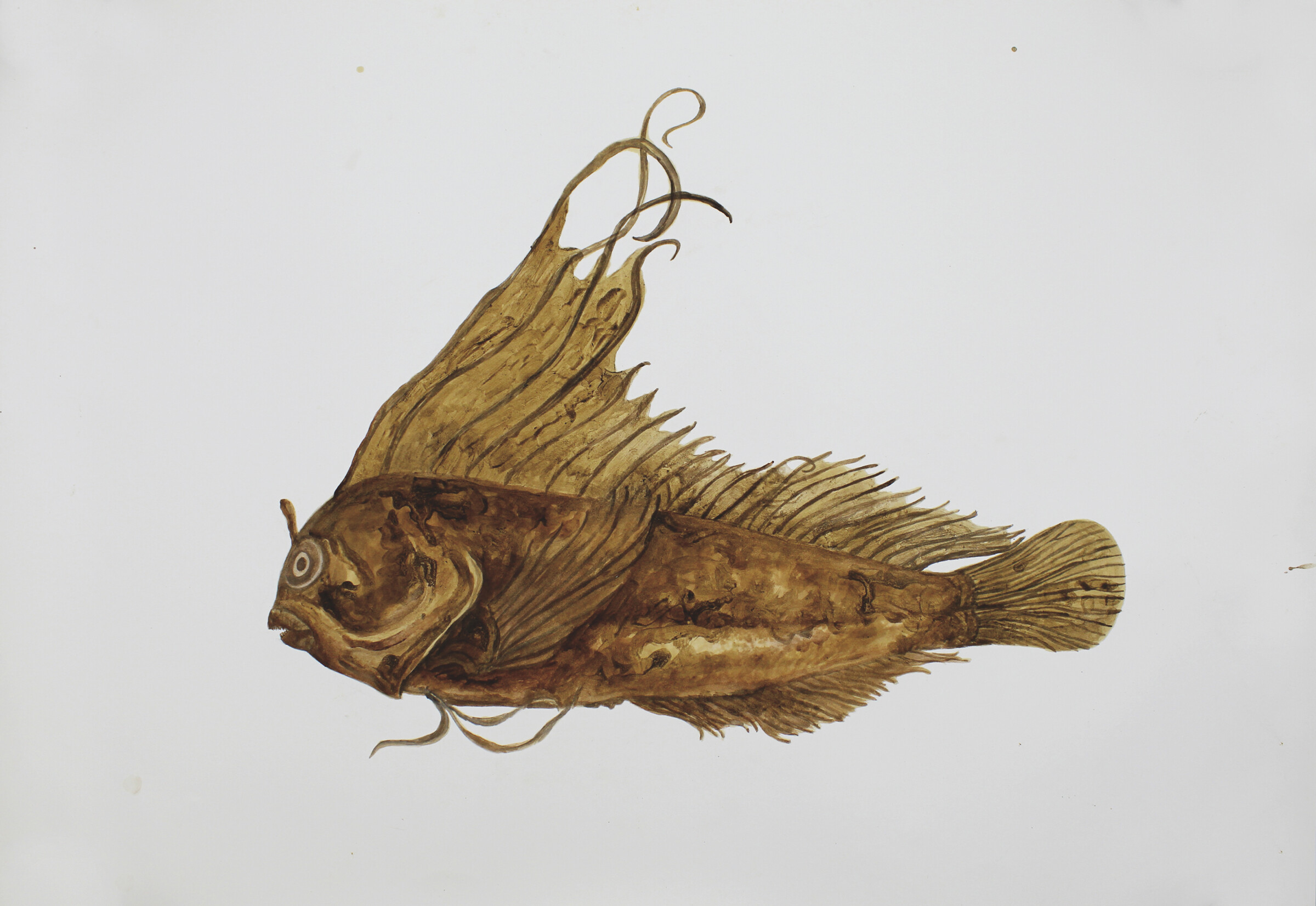
Brandon Ballengée, MIA Deepwater Florida Dreamer Anglerfish, 2020–2021 (left), and MIA Highfin Blenny, 2020 (right), mixed media with Deepwater Horizon source crude oil, Taylor Energy / MC20 source crude, contaminated marshland sediment with oil, anaerobic bacteria, iron oxide, and COREXIT 9500A (dispersant) on Arches hot press watercolor paper, 22.5 x 32 inches. Courtesy of the artist and Jennifer Baahng Gallery, New York, NY.
My Crude Oil Paintings are a way to give form to these lost species. I created portraits using historic specimens in the Tulane University Biodiversity Research Institute’s Royal D. Suttkus Fish Collection, the largest preserved fish collection in the world, located in several converted World War II bunkers in Belle Chase, Louisiana. Other species I photographed and radiographed as a 2017 artist-in-residence at the Smithsonian National Museum of Natural History, the second largest fish collection in the world. The works in this series are painted with oil from Deepwater Horizon; “fresh” crude oil from the ongoing Taylor Energy spill; marshland sediment that has been contaminated by oil; and anaerobic bacteria and iron oxide mixed with a chemical dispersant used in oil spill cleanup efforts.

Brandon Ballengée, SOS Slender Snipe Eel, 2023, salvaged latex house paint on thrifted cotton bed sheets, 88 x 90 inches. Courtesy of the artist and Various Small Fires, Los Angeles, CA.
The SOS Paintings are interpretations of deep-sea species put at risk by new deep-water mining in the Gulf of Mexico. Almost nothing is known about the natural history of these species or their environment, the abyssal zone. In this deep, dark region, many fish use bioluminescence and other adaptions to survive. Mining is likely to alter the ocean floor, create subsea sounds, and cloud the water—but how these actions will affect fish and other creatures is not well understood. These new paintings, created using thrifted bed sheets and latex house paint, are the largest I have made in decades. I see them as part of an “aesthetic of loss,” where I am giving visual form to absent species.
Through my art, I speculate on future outcomes, question behaviors, express concerns, and mourn. As a biologist, however, I must remain analytical and report unbiased information. For me, art and science are complementary methods of trying to understand the world and ourselves, along with the complex socioecological challenges we face.
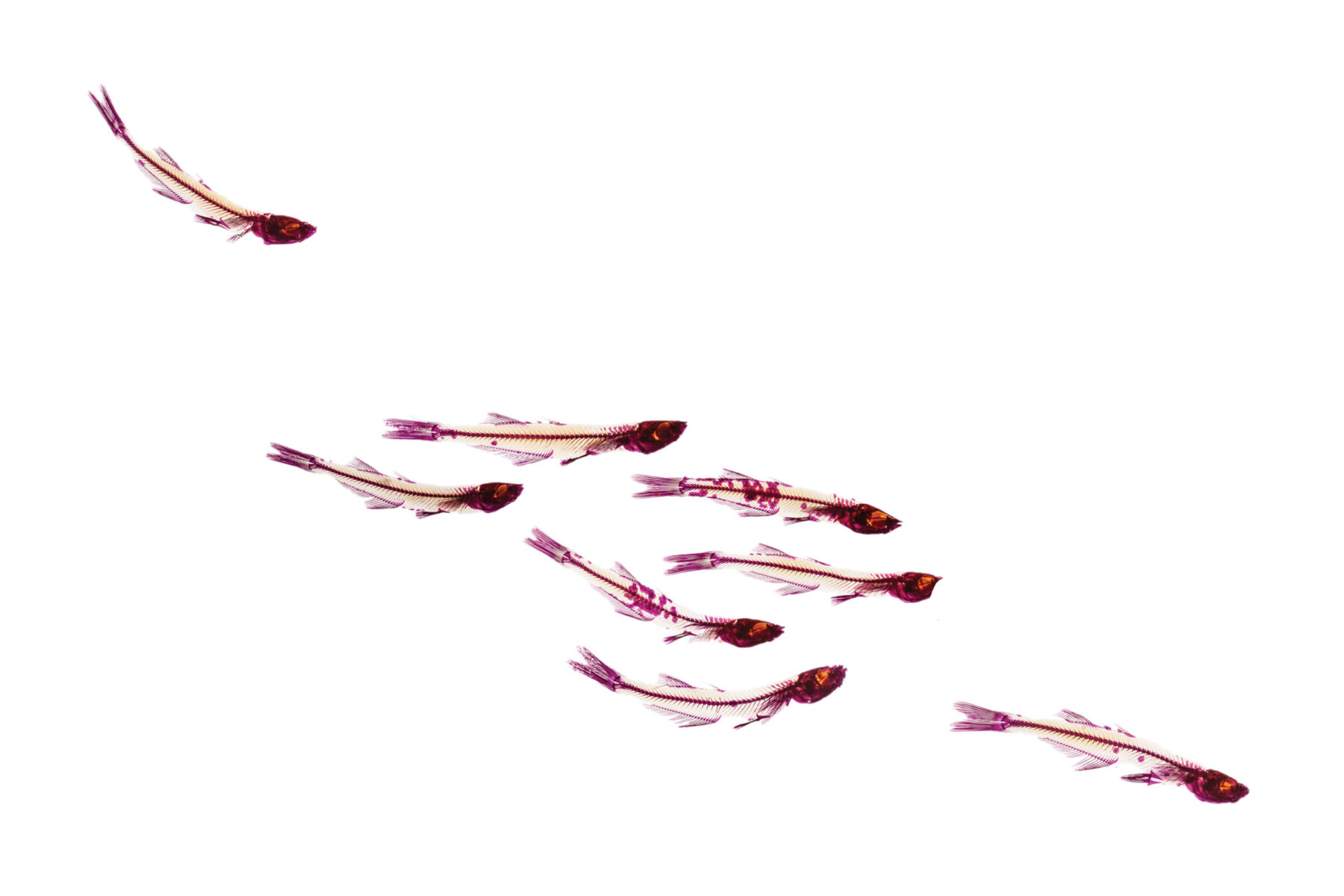

Brandon Ballengée, RIP Gulf Silversides, 2014 (left), and RIP Atlantic Lookdowns, 2014 (right), giclée prints on handmade Japanese rice paper, 18 x 24 inches. Courtesy of the artist and Jennifer Baahng Gallery, New York, NY.
